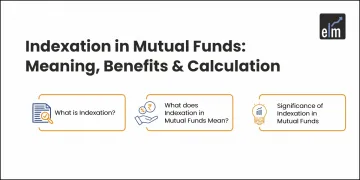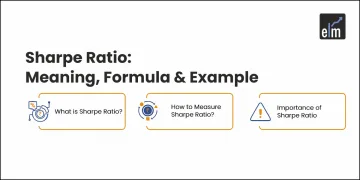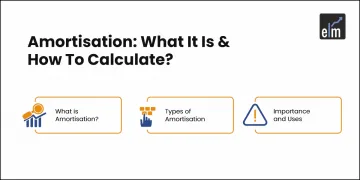The average stock market return has been approximately 14% on average since 2018. Because of this, it is regarded as a standard by which to measure and aim for long-term equity investment performance.
In financial planning, benchmarks or general guidelines can be useful as they provide insight into whether you’re headed in the right direction.
Although they are helpful for producing fast estimates and approximations, they might not always take important aspects into consideration.
Your risk tolerance, time horizon, and other variables will determine if the 14% rule of thumb is a suitable benchmark for your particular portfolio.
In today’s blog, let us discuss Average Stock Market Return- A Rule of Thumb for Investing-
Table of Contents
What is the rule of thumb for Average Stock Market Return?
Investors utilize the Average Stock Market Return, often known as the “Rule of Thumb,” as a broad guideline to predict the normal annual gain in the stock market over an extended period of time. Investors can more easily create expectations about possible returns on their investments with the help of this guideline.
The Nifty50 in the last 5 years has given an average return of 14%-17%. Even if it is impossible to forecast stock market returns, you can obtain a general notion of the profit you can make with a diversified portfolio by looking at the “average stock market return.” It is the rate at which the value of stock market indices grows annually.
Here is a snapshot of the average returns of Nifty50 from 1999 to 2021:
These indices use a standardized technique to assess the performance of a group of shares. It’s crucial to remember that this rule is only a statistical average and cannot be used to predict particular results for individual investments or for any given year.
From the above date, we can see that In 2021, the average return on the Indian stock market was 24.6%. 2008 saw the lowest average return of -51.3%, while 2009 saw the highest average return of 77.6%.
So, we should try to build a diversified portfolio or invest in different investment vehicles that can generate around 14%-17% average returns over 5 years.
Cautious Optimism and Long-Term Perspective
One should note that the average return is calculated for the last 5 years. Because of this, it should only be applied to long-term financial goals. Using it, you may estimate the potential total of an initial and subsequent investment as well as the annual amount of savings required to reach your goal.
Savings for a car or vacation, for example, are examples of more immediate financial goals with shorter timelines that should not be met.
For shorter time horizons, this rule of thumb is inapplicable for this reason. Selecting investments that are less volatile (less prone to large market swings) and more cautious is preferable if you won’t be investing for a long time. This usually means lower long-term profits.
Applying the Rule of Thumb
Utilizing past performance data as a benchmark to establish expectations and make well-informed investing decisions is the process of applying the Rule of Thumb for average stock market returns. Here are some doable actions you may take to include this rule in your investing plan:
1. Understand Your Investment Horizon
When used for long-term investments, the Rule of Thumb works best. Recognize your investment horizon and make sure it fits within the historical parameters that are utilized to determine typical returns.
2. Review Historical Data
Analyse past performance information for important stock market indices, such as the Nifty50. Seek research or evaluations spanning multiple decades to have a thorough understanding of the market’s fluctuations.
3. Calculate Your Expected Returns
Use the average return range of 14-17% as a baseline. If you’re more risk-averse, you might lean toward the lower end of the range; if you’re more risk-tolerant, you might use the top end.
4. Consider Inflation
Inflation-adjust your projected returns. Because the average return is often expressed in nominal terms, you should take inflation into account when estimating the actual buying power of your investment profits.
5. Factor in Diversification
One important tactic in risk management is diversification. The Rule of Thumb is a good place to start, but in order to reduce risk and possibly increase returns, you should diversify your portfolio over a variety of asset types.
6. Set Realistic Expectations
Recognize that the average return is not a promise but rather a statistical measure. In the near term, markets may diverge from historical averages, so be ready for fluctuations in the returns on your investments and set reasonable expectations.
7. Stay Informed
Remain up to date on economic statistics, world events that could affect the financial markets, and current market circumstances. Making informed financial decisions in a timely manner requires not just a foundation of past data but also constant awareness of current issues.
8. Regularly Review Your Portfolio
Review and adjust your investment portfolio on a regular basis. Your personal financial circumstances and the state of the market could change, necessitating changes to your investment plan.
Bottomline
Keep in mind that the Rule of Thumb is a tool to help you set expectations, not a universally applicable answer. Customize your investing plan to your unique situation and be ready to adjust if the market conditions change.






